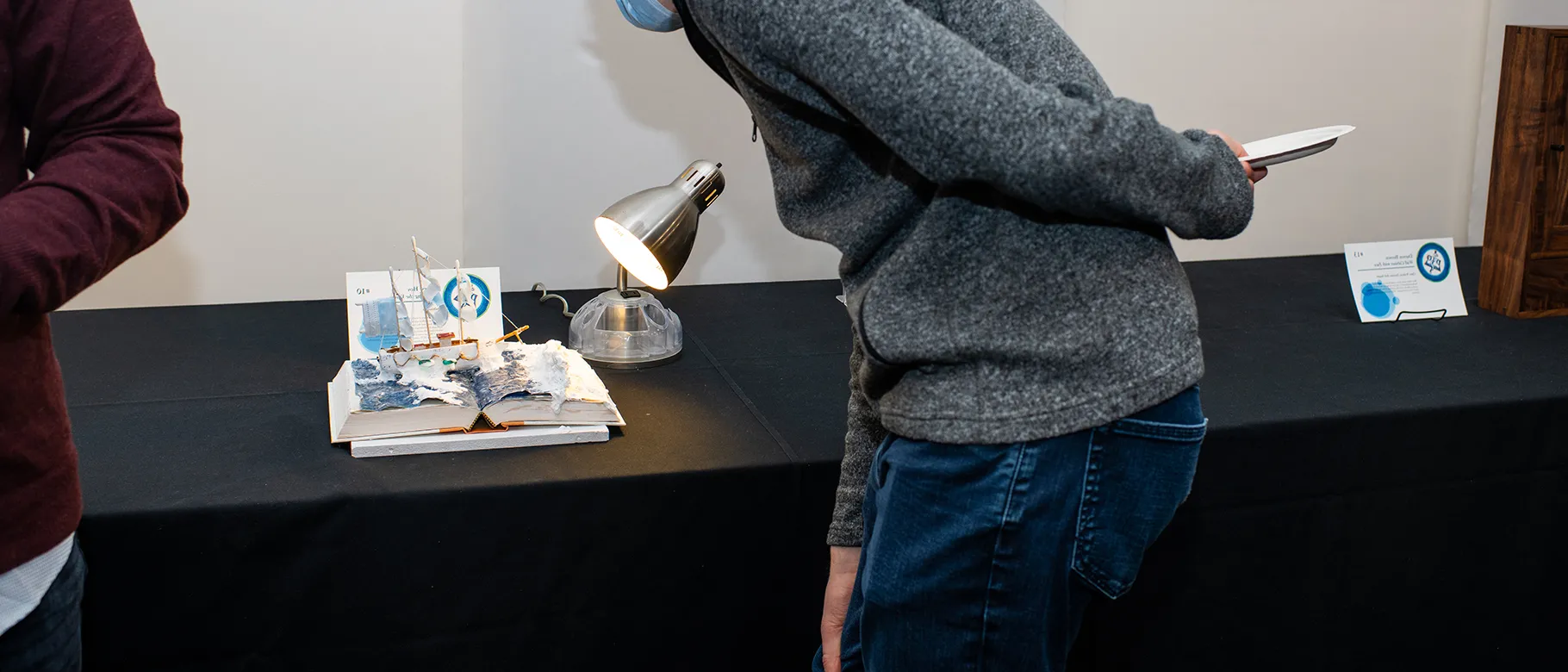UNE COM embraces diversity, equity through artistic expression

As part of its ongoing commitment to equity, diversity, and inclusion, the University of New England College of Osteopathic Medicine (UNE COM) recently hosted a series of events commemorating Black History Month, culminating in a display of art by students, faculty, professional staff, and their families representing “The UNE COM we strive to be” at an event known as “ArtCOM.”
Several movie screenings and discussions about race and equity — including systemic barriers to medical education for Black individuals — took place throughout February, serving as a reminder of the role the University’s medical school plays in honoring the experiences of BIPOC communities, both within and external to UNE COM itself.
“Black History Month is an annual celebration of achievements by African Americans and a time for recognizing their critical role in our history,” commented Vin Buonocore, M.Ed., associate dean of Recruitment, Student, and Alumni Services for UNE COM. “As a medical school, we must make an extra effort to better understand the lived experiences of our Black peers, patients, and fellow providers.”
ArtCOM, held Friday, March 4, drew nearly 50 UNE COM students, faculty, professional staff and their families, who created artistic interpretations of the theme, and served as a transition into celebrating Women’s History Month, which is recognized in March.
Andrew Hoy (D.O., ’24) was inspired by the ocean when he created his piece, “Traversing the Waves.” A 3-D book in which the ocean serves as the binding and medical supplies compose a boat, the work utilizes everyday materials — including glue, hand soap, shaving cream, and marshmallow fluff — to create a visual representation of a student’s journey through medical school.
“The journey through UNE is a lot like sailing across an ocean,” Hoy reflected. “You don't know what's on the other side. Sometimes the sea is rough, sometimes the sea is calm. Regardless, if you work with the people around you, you can eventually reach whatever lies on the other side of the ocean.”
Shadia Kawkabani (D.O., ’24) said the underlying theme of her work is “the power of voice.”
“We demonstrate this power when we use our voice to express our emotions and communicate our ideas and thoughts,” Kawkabani remarked. “With language, we have influence upon the world surrounding us. When we use our voice to speak out against injustice, we utilize one of the most powerful skills we have.”
Kawkabani used a black, metal jewelry hanger as the basis for her piece, coating it in white polymer clay and alternating baking and sculpting techniques to create a visual interpretation of the anatomical trachea and larynx. She added sculpted flowers to “emphasize the beauty of phonation.”
The completed piece, she said, serves the dual purposes of visually representing the skeletomuscular basis for speech production and to serve as a jewelry hanger, demonstrating the utility of our voices beyond the beauty of phonation.
Kawkabani said that, to her, the theme “the UNE COM we strive to be” means a medical school that is active in seeking justice both socially and physically.
“I imagine a UNE COM that unequivocally and unapologetically speaks out against injustice, advocates for its students, values the voices and concerns of its entire student population, and, through intentional action, evolves with the world around us in a manner that prioritizes inclusivity, social determinants of health, and well-being for all,” she stated. “In striving to serve our patients best, we must uplift the individuals who will be providing care to those patients.”
Jane Carreiro, D.O., vice president for Health Affairs and dean of the UNE College of Osteopathic Medicine, lauded the students for their participation in the month’s events.
“I am proud of our community for organizing and attending events that promote social justice, racial equity, and gender equality,” Carreiro remarked. “These are some of the more hidden aspects of what it means to be a physician, and it is inspiring to see them being brought to light here at UNE COM.”


